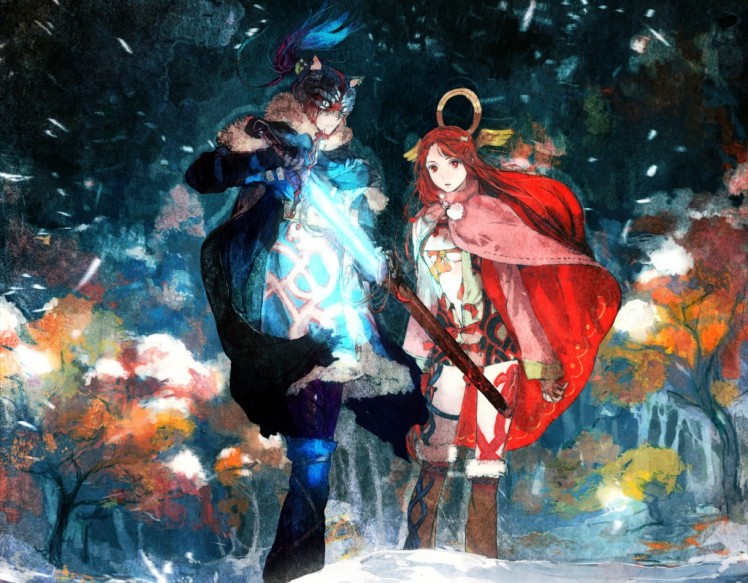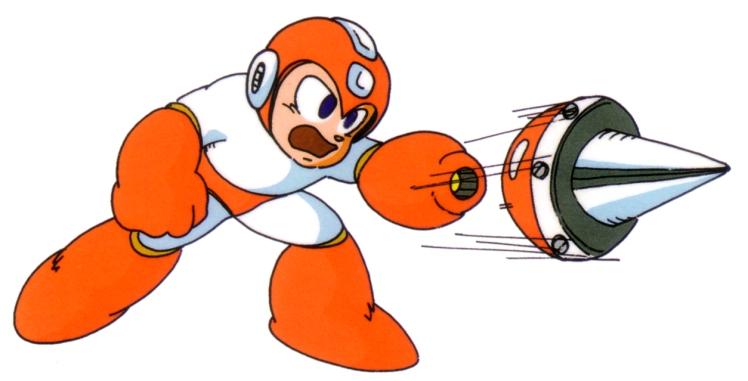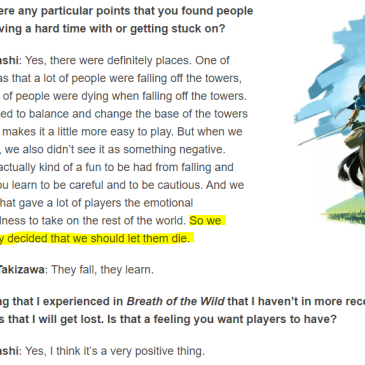
I Am Setsuna is an RPG in the classic JRPG style. This means that there is a Grind. I Am Setsuna does something a little novel with its grind mechanics that I think is worth exploring both for the ways in which it’s innovative, and in the ways in which it probably doesn’t do enough to fix the Grind problem.
Spritnite & Monster Kills
The roots of I Am Setsuna‘s anti-grind lie in spritnite. Spritnite are significant items in the gameplay: each one you find gives your characters dramatic new abilities. In I Am Setsuna, a spell or special attack that some games might grant you when you level up is instead granted to you through the spritnite you have equipped (much like materia in Final Fantasy VII).
This makes the discovery of new spritnite a significant event for the player. New attacks! New spells! New combos! Spritnite even comes with rather significant bits of world lore for those of us into exploring the story. The idea of getting new spritnite is a significant driver of your action.
The main way you get spritnite in I Am Setsuna is rather mundane, however. Merchants sell it. Even fairly early in the game, these merchants will be loaded down with a dizzying variety of spritnite. The action you take to get new spritnite is “find the merchant in town and talk to them.”
As a wrinkle, these merchants don’t take your typical gold coins. Instead, they are after monster drops – “materials” in the game’s parlance.
Monster drops are, for the most part, not based on rarity. There is one “rare drop” for each monster family, and there’s a few monsters whose appearance is random and who often escape combat before the player can act (this game’s version of Metal Slimes). But most monsters freely drop most of their materials with only one requirement: that you kill them a certain way. Kill them by hitting their HP almost exactly for an Exact Kill. Kill them by massively over-damaging them for an Overkill. Kill them with a particular character, weapon, or elemental spell for a Fire Kill, an Ice Kill, a Time Kill, a Light Kill, etc.
With those elements – spritnite, merchants, and monster drops – we have the basic loop of I Am Setsuna‘s grind: you want new spritnite, so you find the monster drops that the merchant needs to give you the spritnite. This means fighting the same monster groups over and over for specific or challenging drops, which gives you the XP you need to grind up. It also gives you the gold you need, via selling those monster drops (including all those you don’t need for the specific spritnite you seek) to the spritnite merchants.
Complexity & Variability
The ultimate effect of I Am Setsuna‘s grind loop may be the same as ever – fighting the same monsters over and over again – but the different drops, the different characters you need to achieve the various types of Kill, the spritnite you get at the end, the freedom to choose which materials to pursue and which to leave alone…all this offers a lot of decision points, encourages diversity, and gives a significant reward for all that. These elements make the game’s grind significantly less annoying than it could be if they adhered too closely to old JRPG grind tropes.
In effect, you’re getting something of a voluntary fetch-quest generator. “Give me twenty bear asses” is replaced by “Give me two Glowing Stones, one Fir Branch, one Exotic Flower, and one Penguin’s Treasure,” with part of the fun being discovering what monster drops the necessary items.
The complexity of the system is key to this variability – there are a lot of potential places where a player can say, “I’m bored of doing this for now, let’s do something else,” and have that still lead to a valuable reward. You can change a lot of elements of the grind, and still be grinding. The rote repetition isn’t there at a granular level, but it is still there at the macro level, allowing the design team to still encourage grinding, just in a more nuanced way than many classic JRPG’s.
Monotony & Impossibility
Some of the failures of I Am Setsuna‘s grind loop aren’t exactly the fault of the system’s design, but rather it’s supporting elements. I Am Setsuna has made some significant choices that contribute to the feeling of boredom in the grind that have little to do with the grind loop itself. These include its soundtrack – though the piano melodies are fairly good, and set a nice mood, the difference betweeen one track and another with only one instrument is blurred. This means that there’s little variation in the sound that happens during the grind. Overworld theme – dungeon theme – battle theme 5-10 times, repeat.
There’s also not much in the way of visual distinction. I Am Setsuna does some beautiful things with its wintery setting, but most of its dungeons are a monotony of white and gray. Over the course of a grind it becomes stifling. Another snowy wood. Another snowy mountain.
Again and again, the lesson remains: the art around your game design is a crucial part of the overall game.
The system itself has flaws that exacerbate that monotony, too. For one, not every bit of spritnite will be something you can access when it becomes available. Your first access to certain kind of elements doesn’t come until much later in the game, but spirtnite that uses materials that can only be harvested with those elements is present in the merchant’s inventory early. Some spritnite also requires rare drops from certain bosses that you won’t be able or likely to get the first time through. This removes some of the drive to grind, because you will never be able to grind enough to get that spritnite. Might as well continue on, then, getting what you can when you can.
The framing of the loop system is also quite underwhelming. Giving materials to a merchant is hardly a significant action by your party. Though spritnite itself is a nice reward, the narrative that backs up your acquisition is a little hollow – no different in effect from grinding for gold. It makes the materials something of a burden rather than something interesting to find.
The materials themselves also have no distinguishing features or unique lore associated with them. Though several have very evocative names, the various branches, roots, and flowers all blend together, leading to more grind than intended when a misreading has you chasing down a material that you can’t actually harvest yet. And there are few worse feelings in a world where grind exists than grinding uselessly. This game’s grind loop makes that a real possibility.
The Good Grind
Grind is often a feature of large, sprawling games, rather than a bug. Today saw the release of Red Dead Redemption 2, which takes hours to get going, and Assassin’s Creed: Odyssey has also been noted to have a slow start. The many sidequests and goof-off opportunities in open-world games tends to be one of the fun aspects of them – the ability to go off the main game and get lost for hours in the wilderness is, in part, a way to encourage a grind loop. Even without level gatekeeping, the purpose is to encourage you to consume what the game developers have produced, to devote more time to the game, and to see it as a greater value. Grind is abnegation play, just zoning out and pushing buttons for a while. Grind is Candy Crush and stopping random criminals in Spider-Man and ignoring the main quest in Skyrim. It can be compelling enough to be the main draw of the game!
To make the grind compelling, though, you need to hide the monotony and repetition behind it. I Am Setsuna succeeds in obscuring that with some complexity and self-determination, but due to its art direction, it’s sound direction, it’s narrative design, and it’s pacing, it doesn’t quite achieve a good grind.
Grind – or, more politely, abnegation – is something that most games have some of by design. Abnegation in my games might be significantly smaller in scope – more on the order of minutes than days – but even those minutes should contain compelling, repetitive loops. Agency, variety, and juicy rewards are good ways to improve the fun of the grind. The grind gets dull when it gets repetitive, or when it feels pointless, and so I should keep a close eye on dull cycles in my own design.
With luck, I can achieve a few minutes of good grind, and not wear out my welcome.


















